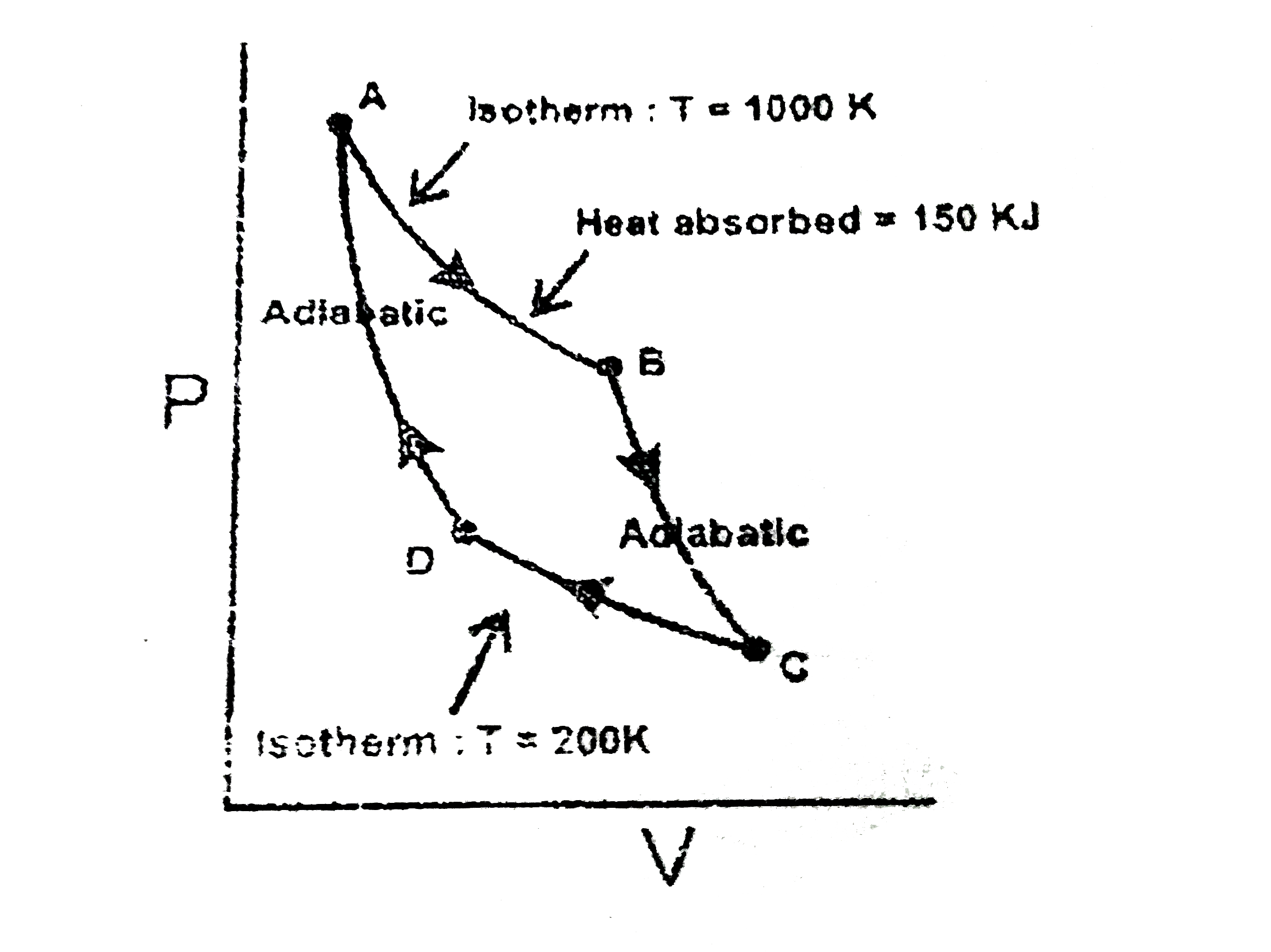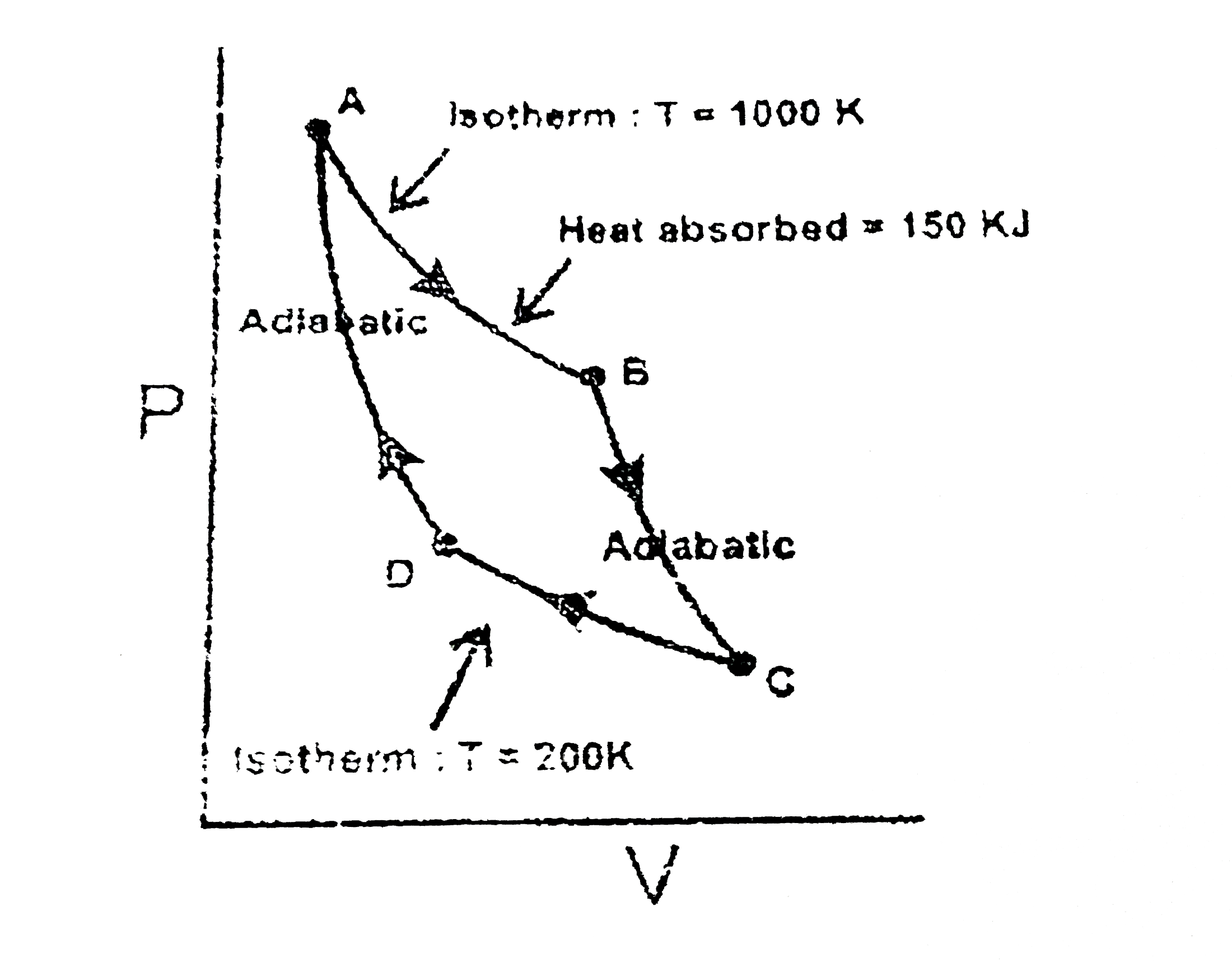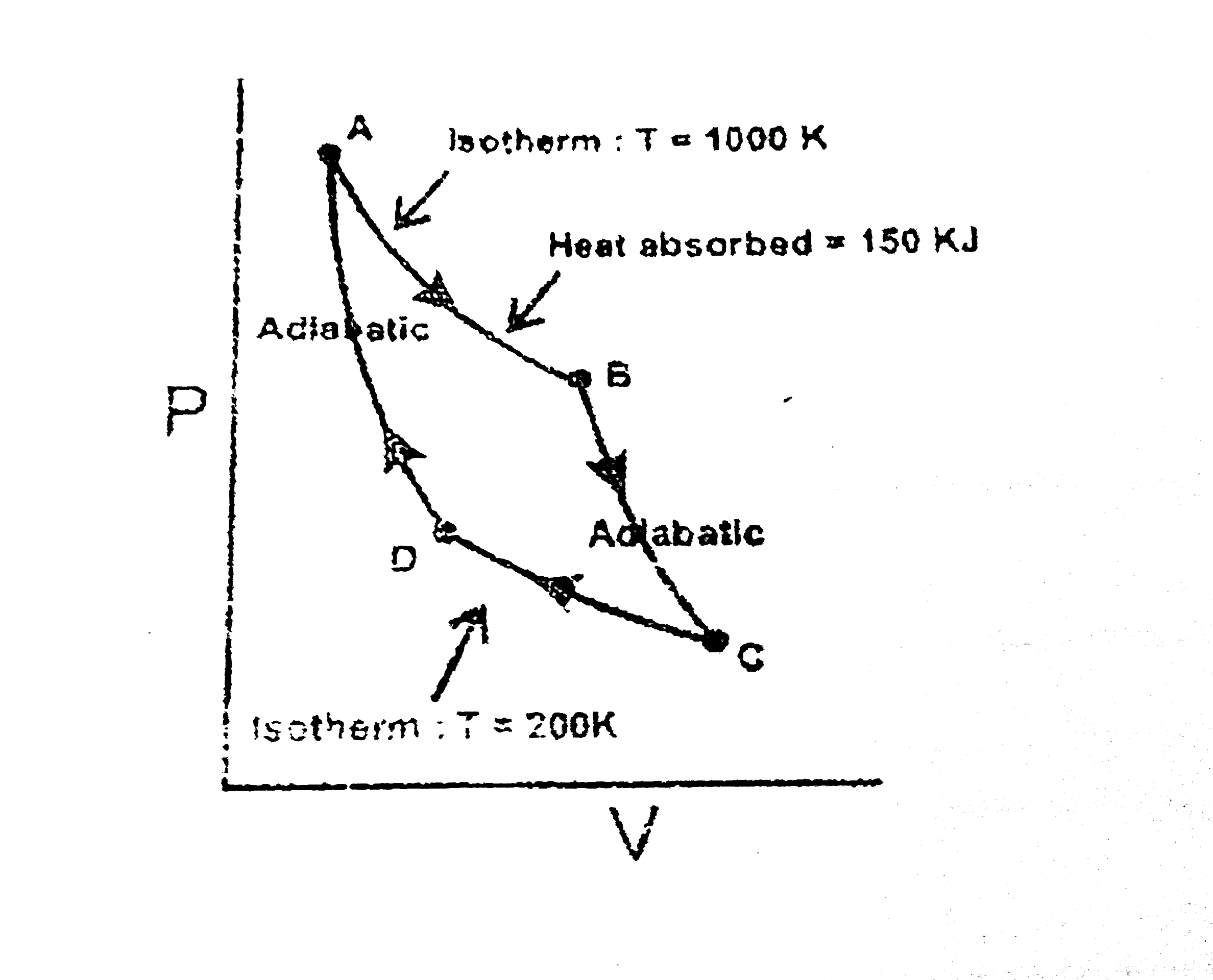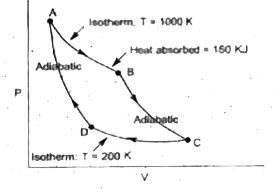The accompanying diagram represents a reversible cannot cycle for an ideal gas:

How many heat is rejected at the lower temperature, 200K, during the isothermal compression?
A
150 KJ
B
30KJ
C
120KJ
D
data are not sufficient to calculate exact value
Video Solution
Text Solution
The correct Answer is:B
−qc=qn(TcTh)=150×2001000
Heat rejected =30 KJ
|
Updated on:21/07/2023
Topper's Solved these Questions
- BOOK - RESONANCECHAPTER - THERMODYNAMICSEXERCISE - exercise-3 part-III Advanced level Solutions (STAGE-I)6videos
THERMODYNAMICS
- BOOK - RESONANCECHAPTER - THERMODYNAMICSEXERCISE - exercise-3 part-III Advanced level Solutions (STAGE-II)45videos
THERMODYNAMICS
- BOOK - RESONANCECHAPTER - THERMODYNAMICSEXERCISE - exercise-3 part-1 Advanced level Solutions30videos
THERMODYNAMICS
- BOOK - RESONANCECHAPTER - TEST SERIESEXERCISE - CHEMISTRY50videos
TEST SERIES
Similar Questions
Knowledge Check
- Question 1 - Select One
The accompanying diagram represents a reversible cannot cycle for an ideal gas:

How many heat is rejected at the lower temperature, 200K, during the isothermal compression?A150 kJB30 kJC120 kJDdata are not sufficient to calculate exact value - Question 2 - Select One
The accompanying diagram represents a reversible cannot cycle for an ideal gas:

What is the entropy increase during isothermal at 1000K?A0.15KJ−1B150KJK−1C150JK−1D750JK−1 - Question 3 - Select One
The accompanying diagram represents a reversible cannot cycle for an ideal gas:

What is the Gibbs free energy change during the process A→B ?A150 KJB−150KJC30 KJDdata are not sufficient
During an isothermal reversible expansion of an ideal gas, its
View SolutionDuring the isothermal and reversible compression of an ideal gas the work done will be
View SolutionThe entropy change in the isothermal reversible expansion of 2 moles of an ideal gas from 10 to 100 L at 300 K is
View SolutionThe correct figure representing isothermal and adiabatic compression of an ideal gas from the same initial state is:
View SolutionWhen an ideal gas is compressed adiabatically and reversibly, the final temperature is:
View Solution


